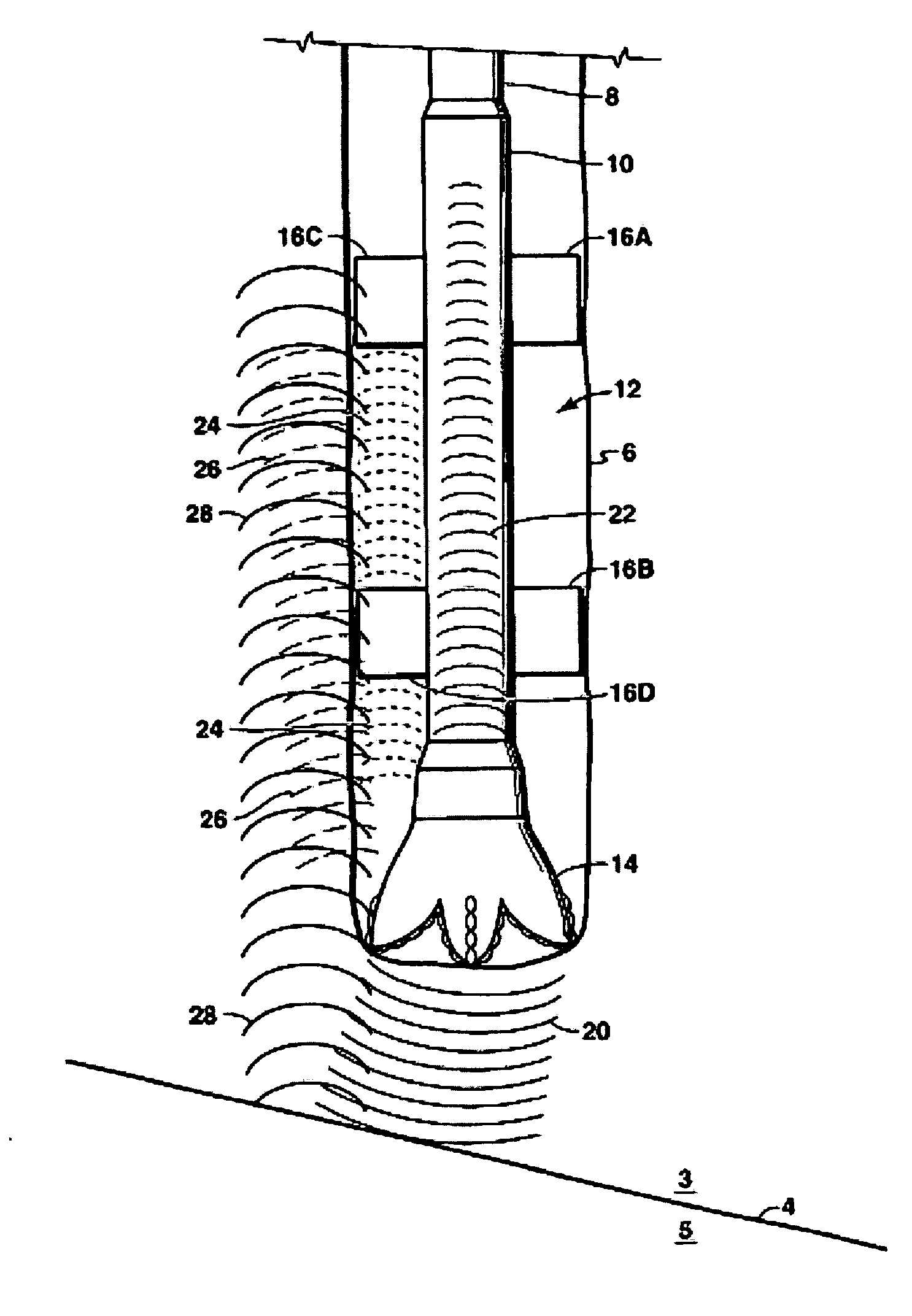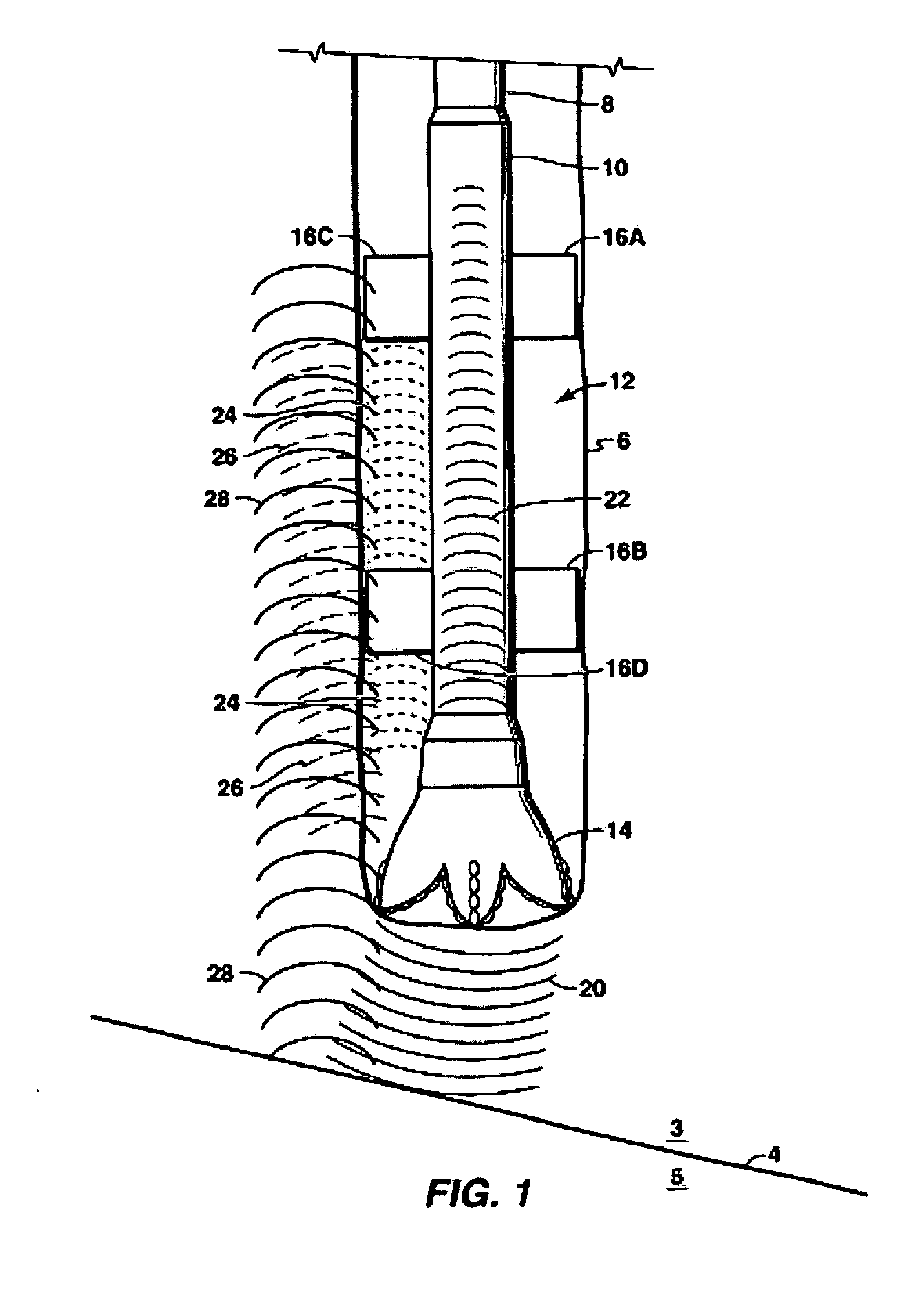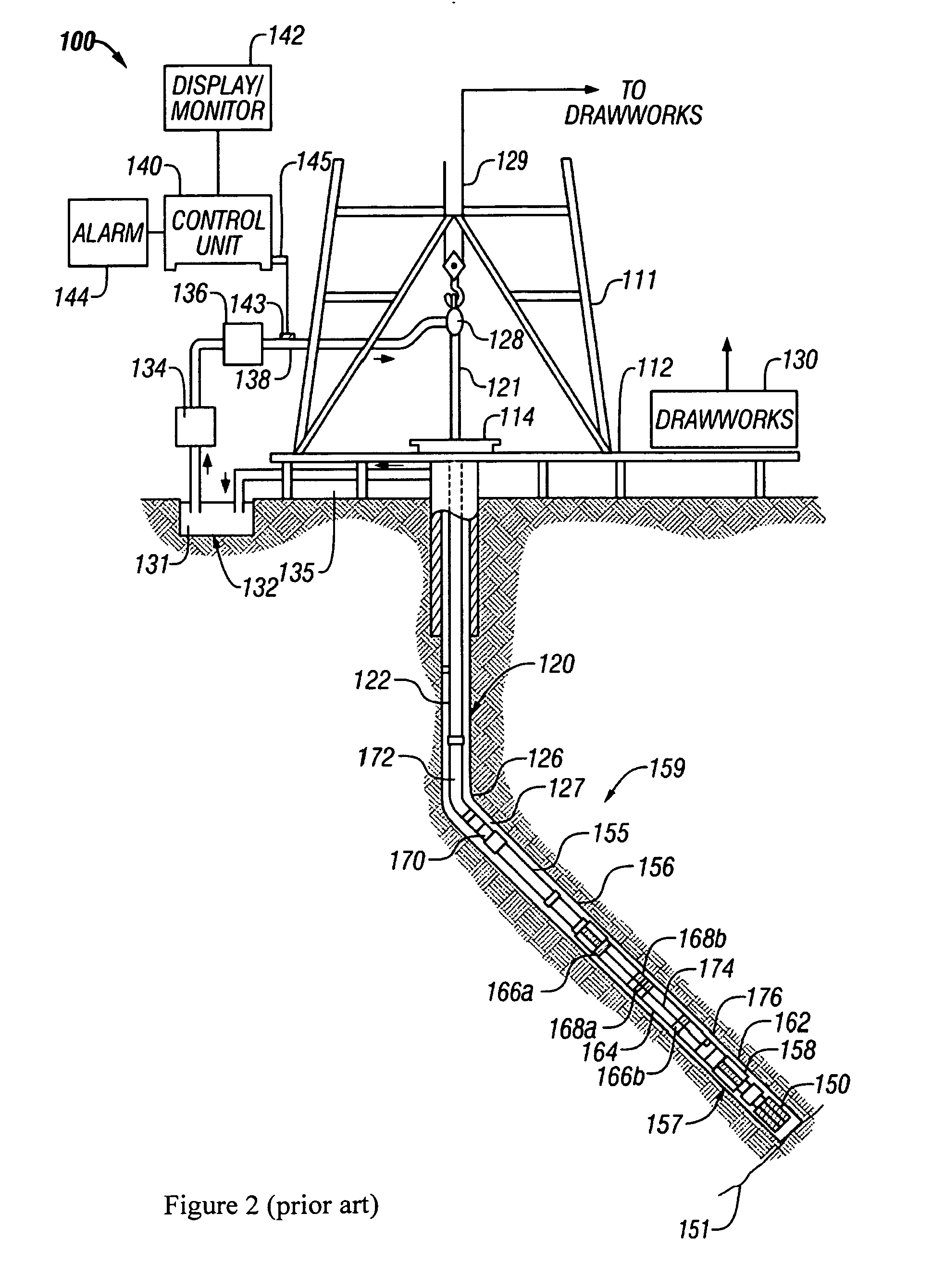Method and apparatus for detecting overpressured zone ahead of a drill bit using resistivity and seismic measurements
a technology of resistivity and seismic measurement, applied in the direction of seismic measurement devices, instruments, seismic research, etc., can solve the problems of affecting the accuracy of seismic measurement. accurate prediction of pore pressure along the length of drilling wells, especially exploration wells, has traditionally been a difficult industry problem
- Summary
- Abstract
- Description
- Claims
- Application Information
AI Technical Summary
Benefits of technology
Problems solved by technology
Method used
Image
Examples
Embodiment Construction
[0027] The present invention is a method and apparatus for identification of overpressured formations ahead of a drillbit during the drilling of a borehole. The objective is the same as that in the Thomann reference, but in the present invention, resistivity measurements are used in contrast to the acoustic measurements used in Thomann. The basis for the method lies in empirical observations that the resistivity of overpressured shales is related to the pressure. An example of such empirical data from Wallace et al. is shown in FIG. 5. Plotted therein are resistivity data from a well in the Gulf of Mexico. The ordinate is the depth and the abscissa is the conductivity in millimhos. The normal trend line for resistivity as a function of depth is denoted by 303. Attention is drawn to the points such as 303 which lie in an overpressured section of the well. The conductivity is significantly higher than would be expected from the trend curve. There are numerous other examples of such ab...
PUM
 Login to View More
Login to View More Abstract
Description
Claims
Application Information
 Login to View More
Login to View More - R&D
- Intellectual Property
- Life Sciences
- Materials
- Tech Scout
- Unparalleled Data Quality
- Higher Quality Content
- 60% Fewer Hallucinations
Browse by: Latest US Patents, China's latest patents, Technical Efficacy Thesaurus, Application Domain, Technology Topic, Popular Technical Reports.
© 2025 PatSnap. All rights reserved.Legal|Privacy policy|Modern Slavery Act Transparency Statement|Sitemap|About US| Contact US: help@patsnap.com



